The Lenovo Legion Go is the newest would-be premium different to the Steam Deck, following within the footsteps of the Asus ROG Ally. It delivers excessive ranges of efficiency for a handheld, and has a couple of progressive tips up its sleeve to assist push the world of handheld PCs ahead. Its aspirations are clear however its execution isn’t totally flawless, making a cavalcade of what ought to have been avoidable annoyances and fiddliness in an in any other case compelling system.
I’ve been utilizing the Legion Go for the previous month now, primarily for gaming but additionally as a laptop computer alternative of kinds. Whereas my first impressions of the system weren’t notably constructive, nearly all of my time with it has been an pleasant if a contact bumpy journey. What Lenovo has cooked up right here has the makings of a tool that might take the best handheld gaming PC crown, nevertheless it’s not fairly there simply but.
Why you’ll be able to belief our recommendation ✔ At PCGamesN, our specialists spend hours testing {hardware}, video games, and VPNs. We share trustworthy, unbiased opinions that will help you purchase the perfect. Discover out how we test.
Lenovo Legion Go specs
The Legion Go options the identical AMD Ryzen Z1 Excessive APU you’ll discover within the ROG Ally. Constructed on the identical Zen 4 structure as AMD Ryzen 7000 desktop processors, it supplies eight cores, 16 threads, and 12 RDNA 3 CUs. It’s actually extra highly effective than the growing older innards of the Steam Deck, which solely options 4 cores and eight CUs from the older Zen 2 and RDNA 2 architectures, respectively.
| CPU | AMD Ryzen Z1 Excessive (8 cores / 16 threads) |
| GPU | AMD RDNA 3 (12 CUs) |
| RAM | 16GB LPDDR5X (7,500MHz) |
| Show | 8.8-inch IPS (2560 x 1600 /144Hz) |
| Battery | 49.2WHr |
| Storage | As much as 1TB NVMe SSD |
| Weight | 854 / 640g (with controllers indifferent) |
| Dimension (W x D x H) | 298.83 x 131 x 40.7mm |
Relating to RAM, the Legion Go has the sting over its two closest opponents. Lenovo has opted for a similar capability of 16GB however has clocked the reminiscence at 7,500MHz, which ought to present some efficiency beneficial properties in memory-sensitive video games. That stated, that is extra of a nice-to-have function than a transformative benefit.
Storage choices are available 512GB and 1TB flavors, however the Legion Go might be upgraded with an off-the-shelf M.2 PCIe 4.0 2242 SSD. Nevertheless, it’s harder to entry the internals of this handheld in comparison with the Steam Deck, with the Legion Go requiring each a screwdriver and prying instruments. Fortunately, there’s a microSD card slot to assist bolster storage additional.
Lenovo Legion Go design
Holding the Legion Go in your hand, its weight is not possible to disregard. At 854g, with the controllers hooked up, it’s a lot heavier than each the Steam Deck OLED and ROG Ally, by greater than 200g. It’s snug to carry at the least, with the textured grips on the again of the controllers serving to to cement your grip on the system. Nevertheless, prolonged play intervals can turn into fatiguing if you happen to play solely in handheld mode.
To fight this downside, you’ll be able to detach the controllers and use them wirelessly whereas the Legion Go rests on a floor. This isn’t a setup I discover myself doing all that always, however I’m grateful Lenovo has had the sense to incorporate a built-in kickstand to accommodate this playstyle. The controllers themselves really feel nice to make use of, with high-quality supplies and hall-effect joysticks. The proper one even features a touchpad like those discovered on the Steam Deck, albeit recessed and barely smaller. The one actual weak level right here is the D-pad, which lacks the definition of the remainder of the setup.
The joysticks additionally embrace surrounding rings of RGB lighting, which I’d usually write off however Lenovo has sensibly used them to point the cost of the joysticks. Ought to they attain 13-30% battery life, they’ll start blinking shortly for five-second intervals, making it arduous to overlook when they should cost. Whereas this can be a helpful function, although, I want there was a approach to customise the second when these blinks begin, as I’d somewhat the lights remained stable for longer.
I additionally acquired a shocking quantity of utilization out of Legion Go’s ‘FPS mode’, by which one of many controllers transforms right into a joystick-like mouse, because of using a magnetic baseplate. This was undoubtedly a greater approach to play first-person shooters, offering I had a gaming keyboard handy, because the expertise and not using a clacker is just too fiddly for my liking. Preferable as it’s to the joysticks, although, it’s certainly not a full alternative for a correct mouse.
As a consequence of its removable controllers, nonetheless, the Legion Go options top-firing audio system as an alternative of the front-firing tweeters you’ll discover in its opponents. This, sadly, leaves the Lenovo sounding the worst of the three. Utilizing them is certainly not a poor expertise, however the sound lacks each directionality and fullness in comparison with the Steam Deck OLED.
My points with Legion Go’s design, partially on account of their removable controllers, sadly, don’t finish there. The tactic for detaching them is annoyingly cumbersome. Reasonably than observe Nintendo’s lead in bringing the controllers upwards to detach them from the system, Lenovo expects you to deliver them downwards as an alternative. This reads like a small distinction on paper, however in apply, it leaves you needing to choose up the system to each connect and detach the controllers, a far cry from the seamless operation of the Nintendo Change. The locking mechanism for the controllers may also be very finicky, to make issues worse.
Then there’s the problem of button placement. As a substitute of inserting the ‘Choices’ and ‘Menu’ buttons within the high left and proper of the system, Lenovo has relegated them to under the left thumbstick. Of their place, the corporate has put its ‘Legion L’ and ‘Legion R’ buttons. These are used as shortcuts for the Legion Area app, and to shortly entry the built-in sidebar that homes efficiency modes and different options. Each are actually helpful, however don’t take priority over the aforementioned buttons, and create an avoidable awkward interval of muscle reminiscence adjustment.
Lenovo Legion Go show
The massive dimension of the Legion Go, relative to its opponents, is due partially to its 8.8-inch show. It’s the primary facet you’ll most likely discover in regards to the system, and it leaves an superior first impression. Dimension, after all, isn’t every thing, and Lenovo has packed a severely sharp and snazzy panel into this handheld, with a local decision of 1600p and a refresh price of 144Hz. The Steam Deck OLED is of course arduous to beat in the case of display screen high quality, however the IPS within the Legion Go is nearly as good another as you possibly can realistically need.
Video games and content material alike merely feel and look nice on the Legion Go, offered you tune the show accordingly. Whereas video games do look nice at 1600p, you shouldn’t count on to play each sport at such a excessive decision on this handheld. Fortunately, it’s not tough to drop right down to 1200p or 800p by means of the on-board software program, or Home windows show settings. That stated, I did discover some unusual behaviors whereas making an attempt to do that whereas operating video games, so it’s finest to get the display screen arrange earlier than operating any purposes.
Honestly, I want that Lenovo had opted for a 1200p show, because it most of the time ended up being my most popular candy spot for almost all of video games. A decision of 2560 x 1600 might be fairly taxing on the Ryzen Z1 Excessive APU, even at low settings, however I’ll talk about this in additional depth within the efficiency part of this evaluation. Lastly, 800p assist is welcome however can look a bit uncooked and blocky given the scale of the panel. The necessity to drop the entire decision is, after all, much less of a difficulty in video games that assist AMD FSR.
Briefly, I’m glad Lenovo opted to forgo any HDR assist. Given there are not any native dimming zones on this show, a real HDR expertise is just out of the query. The corporate has made the appropriate name by focussing on Legion Go’s SDR expertise, and the outcomes are fairly compelling, with shiny and vibrant colours.
Lenovo Legion Go battery
The 49.2Whr battery contained in the Legion Go falls simply 1WHr wanting the battery within the Steam Deck OLED, however pulls properly forward of the ROG Ally with its comparatively small 40Whr providing. This makes Lenovo’s transportable powerhouse the strongest competitor in opposition to Valve’s handheld in the case of battery life, and it could put up a superb battle in the appropriate circumstances.
Pitting the 2 units in opposition to each other in a battery drag race of kinds, I ran the F1 23 benchmark on a loop till every of them gave out. At 800p, with Medium settings, the outcomes had been shut. The Steam Deck OLED clocked in at two hours, whereas the Legion Go wasn’t too far behind at one hour and 45 minutes. Pushing the decision greater naturally brings down play time however solely barely, with a 1600p check clocking in at one hour and half-hour.
Whereas each units cost shortly, it’s value noting that the Legion Go does replenish sooner because of its 65W charger versus the Steam Deck’s 45W plug.
Lenovo Legion Go efficiency
As anticipated, the Legion Go efficiency is quicker than that of the Steam Deck when each units are operating at a decision of 800p. Shifting as much as greater resolutions, particularly 1200p and 1600p, the Lenovo handheld can maintain up properly or crumble underneath the pressure, relying on the calls for of the sport in query.
Earlier than diving into the nitty gritty of our benchmark outcomes, I ought to be aware that the Legion Go comes with three TDP settings: ‘Effectivity’ (8W), ‘Balanced’ (15W), and ‘Efficiency’ (20W). Naturally, the final of those supplies the best ranges of efficiency on the expense of battery life, barring the customized 30W TDP mode that may be manually configured. All the outcomes mentioned on this evaluation had been carried out with the default ‘Efficiency’ 20W TDP mode.
Beginning with Cyberpunk 2077, utilizing the ‘Steam Deck’ high quality preset, the Legion Go palms in a decent common body price of 55fps at 800p, beating the Steam Deck OLED by 6fps. Nevertheless, the minimal body price is noticeably decrease at 11fps, in comparison with the 21fps from the Deck. There’s nonetheless some work to be completed by Lenovo to higher optimize {hardware} that must be handily beating Valve’s choices.
Shifting as much as 1200p, the Legion Go affords a median body price of 35fps. Implementing a body price cap of 30fps helps to scale back GPU utilization for extra body price stability, creating a pointy and usually playable expertise. That stated, minimums stay a priority, falling proper right down to 4fps. Lastly, 1600p proves an excessive amount of for the hand held, with common efficiency falling to 24fps.
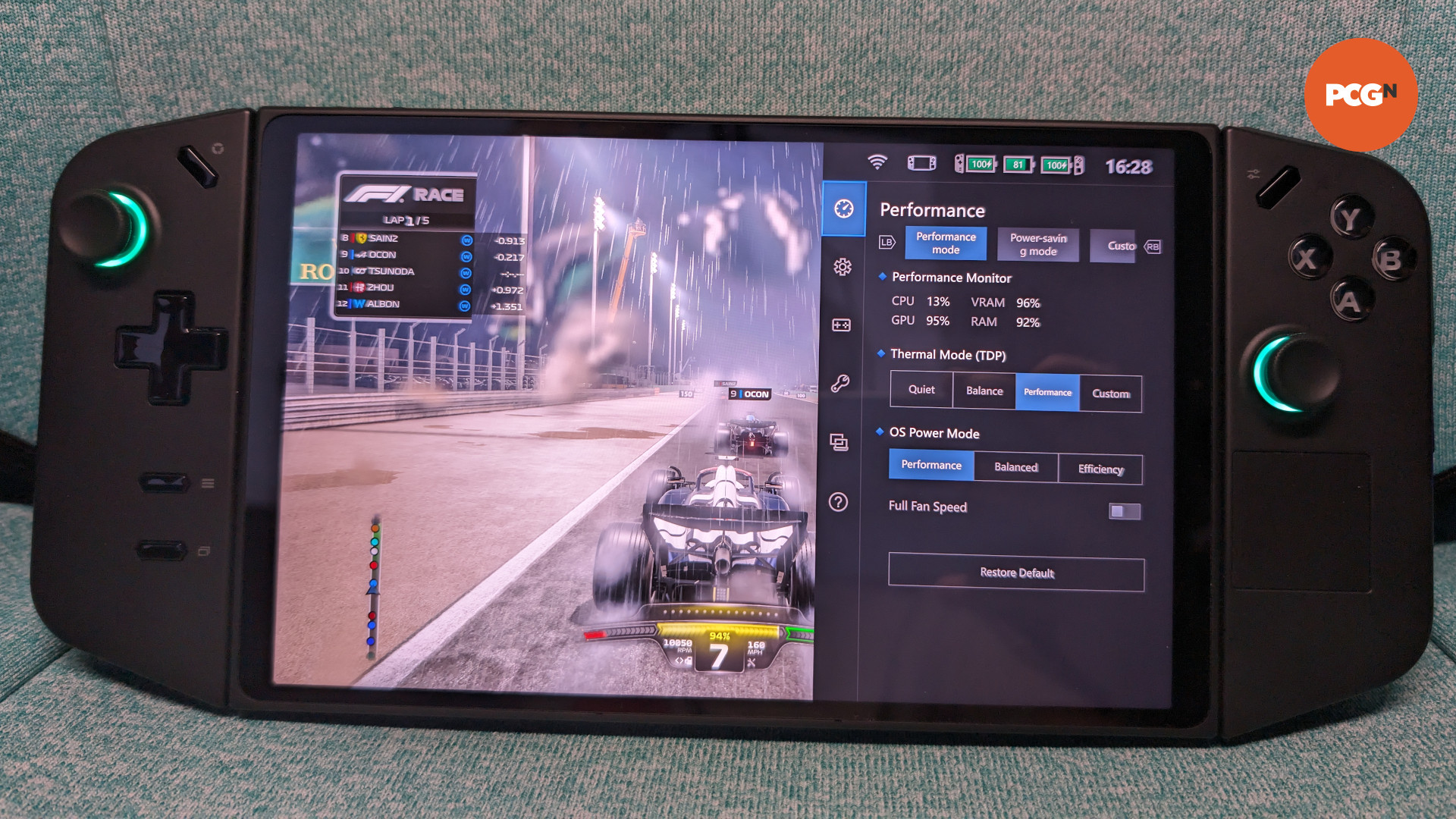
Each the Legion Go and Steam Deck OLED fare significantly better at operating F1 23. Each units deal with the ‘Medium’ high quality preset with grace at 800p, with respective common body charges of 89fps and 74fps and minimums that observe intently behind for a easy expertise. There’s some efficiency headroom on the desk right here, do you have to need to push for higher graphical constancy.
Leaping as much as 1200p and 1600p, the Legion Go doesn’t fall under 30fps. Whereas I’d usually desire a 60fps flooring for racing video games, the choice for greater decision is there for individuals who don’t thoughts burning rubber with fewer frames per second.
Lastly, a lot because the Z1 Excessive APU is faster than the chip contained in the Steam Deck OLED, it’s nonetheless not sturdy sufficient to beat the likes of Returnal. Whereas the Legion Go manages a median body price of 35fps at 800p, action-packed scenes can shortly see efficiency tumble to the purpose the place the sport is sadly unplayable.
Lenovo Legion Go value
With a beginning value of $700 (£700), the Legion Go is a match for the ROG Ally Z1 Excessive mannequin when it comes to price. In comparison with the Steam Deck OLED and LCD, which respectively set you again $549 (£479) or $399 (£349), it’s far more costly.
There may be additionally a 1TB mannequin obtainable for an extra $50 ($750), which is a good premium for a doubling of storage. That stated, you should buy a Steam Deck OLED with the identical 1TB capability for $649 (£569).
You may also purchase a ROG Ally for $600 however I don’t suggest this mannequin. Its Z1 APU is notably weaker than the Z1 Excessive discovered within the $700 model and the Legion Go, to the purpose the place your cash will likely be higher spent on the dearer choices or a Steam Deck.
Must you purchase the Lenovo Legion Go?
The Legion Go is an formidable system that brings some welcome improvements to the hand held PC area, resembling its removable controllers and high-resolution show. Whereas these examples aren’t executed flawlessly, taken as an entire, Lenovo is providing a substitute for the likes of the Steam Deck and ROG Ally that’s value contemplating.
Home windows continues to be a double-edged sword for handhelds just like the Legion Go, offering higher compatibility however a way more fiddly software program expertise. The Legion Area software does its finest to duplicate the sensation of Valve’s Steam Deck overlay and Huge Image Mode however can’t fairly escape feeling like a less expensive imitation.
The elevated ranges of efficiency are welcome, and may finally be the deciding issue whether or not you go for the Legion Go over the Steam Deck. Simply be ready to tinker with Lenovo’s system to get it good on your wants.
Alternate options
If the Lenovo Legion Go isn’t the proper handheld for you, try a few of our alternate suggestions:
Steam Deck OLED
The Steam Deck OLED is just the best handheld gaming PC you should buy proper now. What it lacks in uncooked efficiency in comparison with its dearer opponents, it makes up for in spades with its attractive show, implausible battery life, and wonderful software program expertise because of SteamOS.
Asus ROG Ally
In the event you’re in search of a gaming handheld with the ability of the Legion Go, however desire a lighter system that gives a much less fiddly out-of-the-box expertise, the Asus ROG Ally review is an effective different. Its 1080p show is a extra smart match for the Z1 Excessive APU, nevertheless it does have a smaller battery.
The Lenovo Legion Go is a stable handheld gaming PC, packing top-tier specs with nice controllers and an awesomely sharp show to match. These qualities come at an costly price, although, which is made more durable to swallow given how some design selections get in the best way of a easy consumer expertise.
- Large 8.8-inch display screen
- Removable controllers
- Nice handheld efficiency
- 1600p is mostly too excessive for GPU
- Heavy
- Fiddly software program expertise




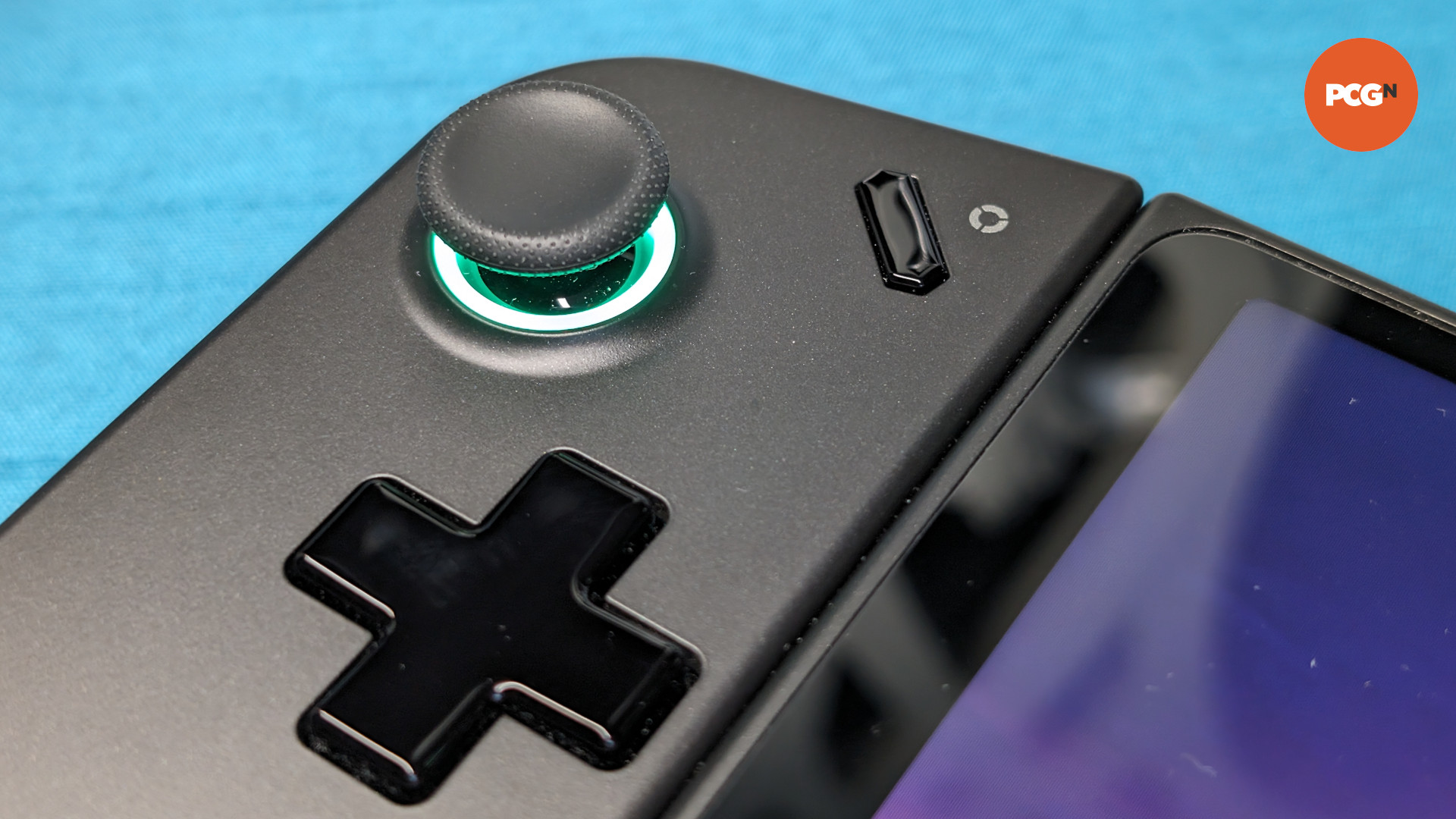

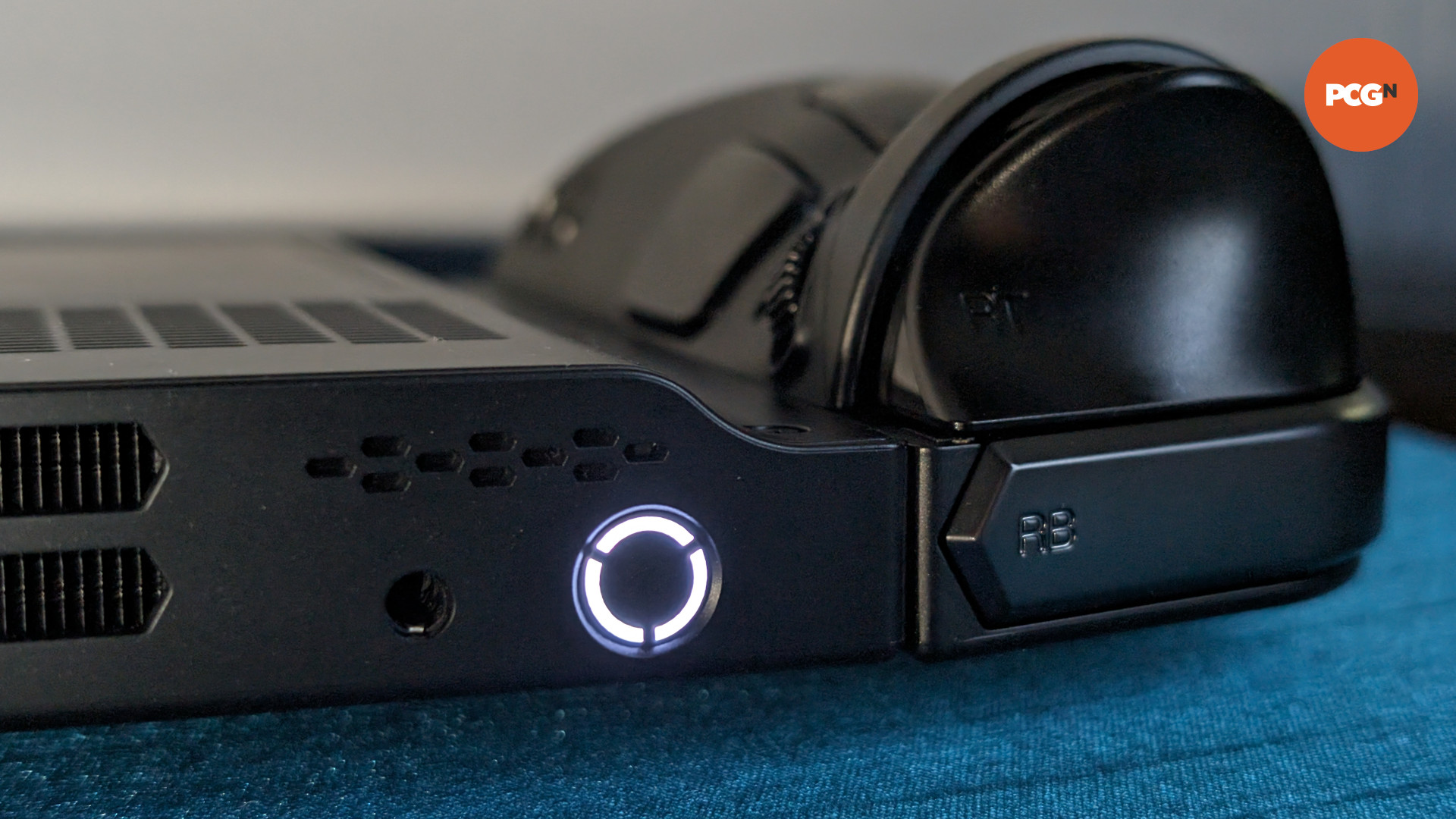
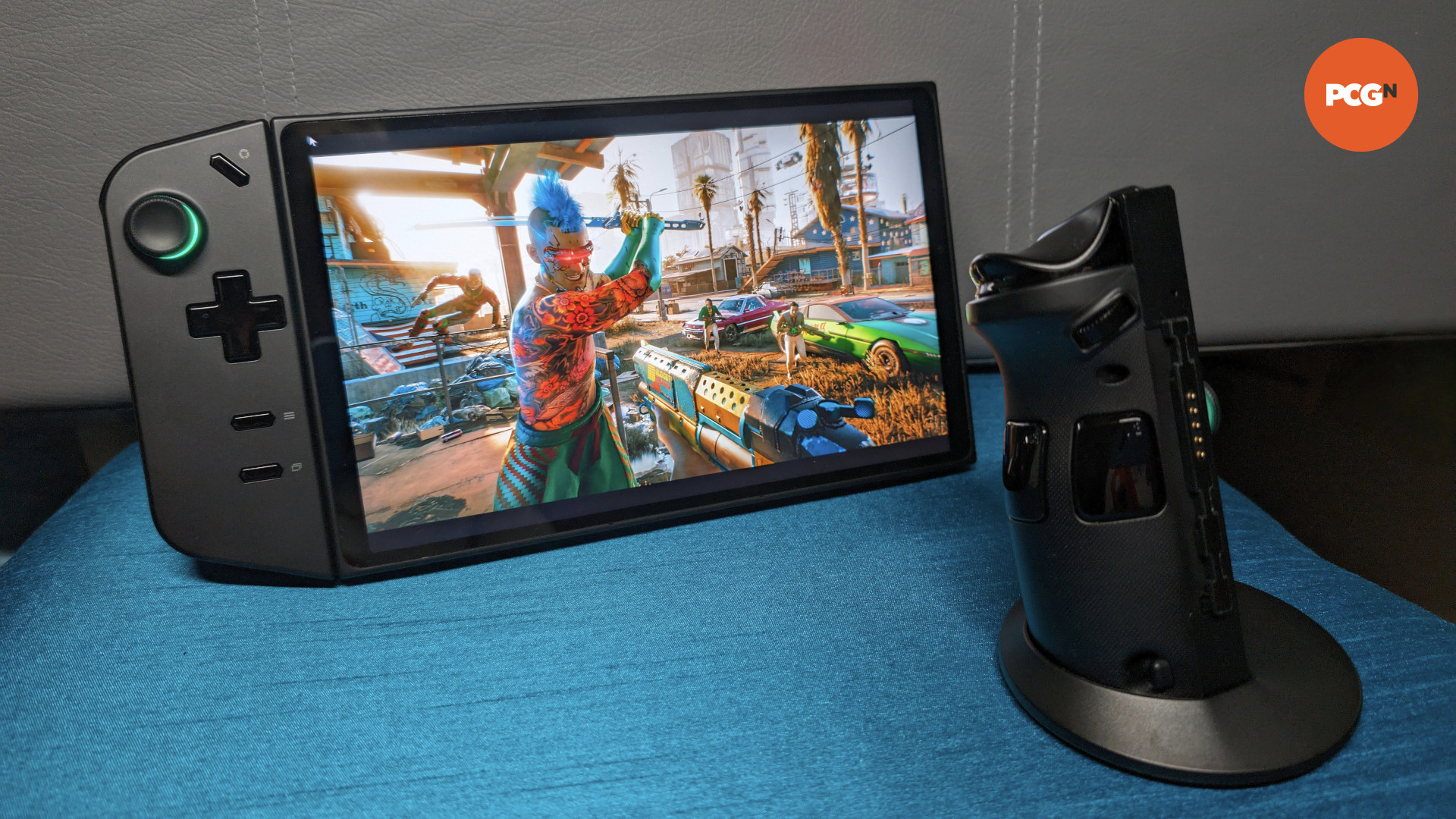
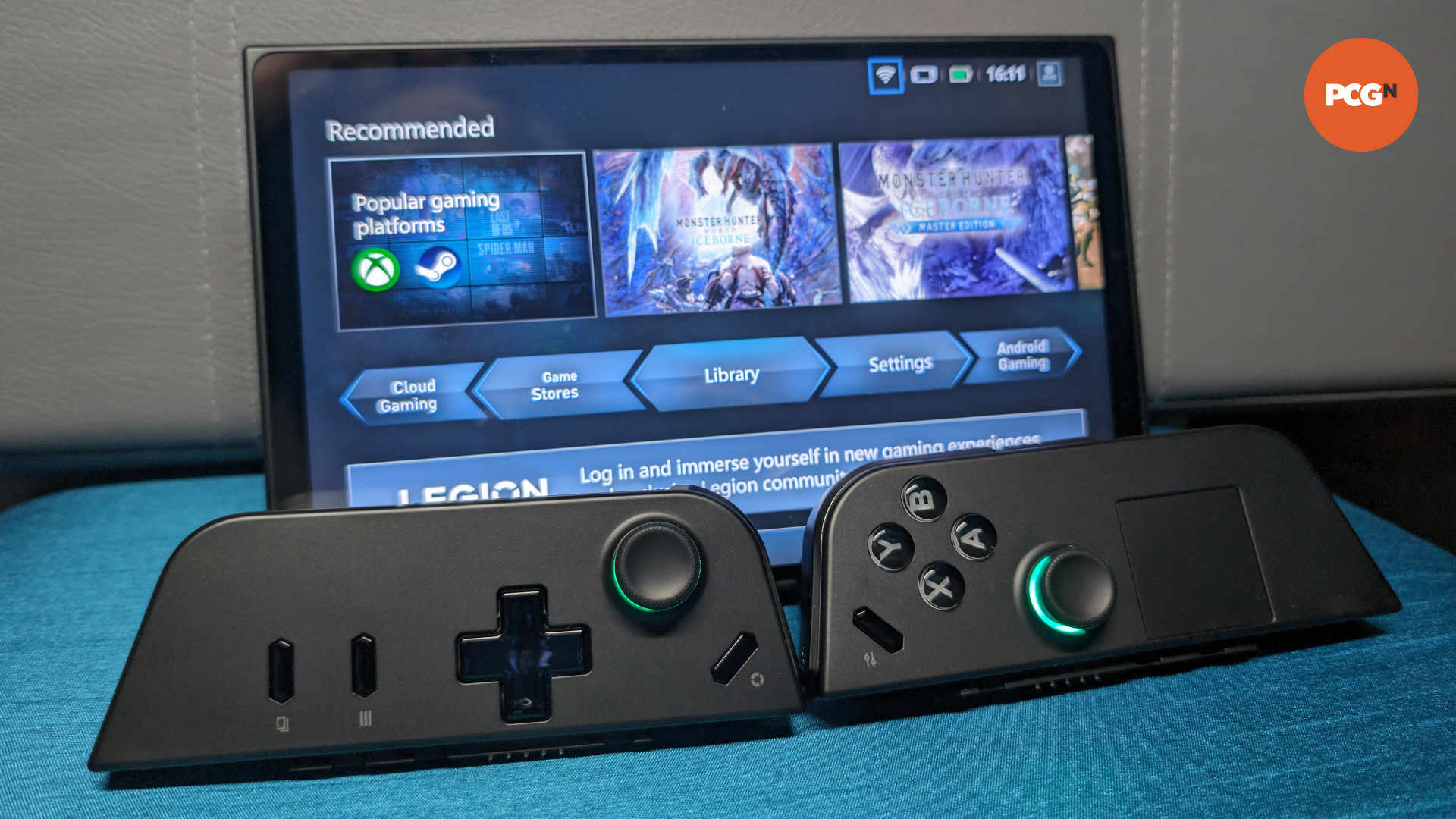
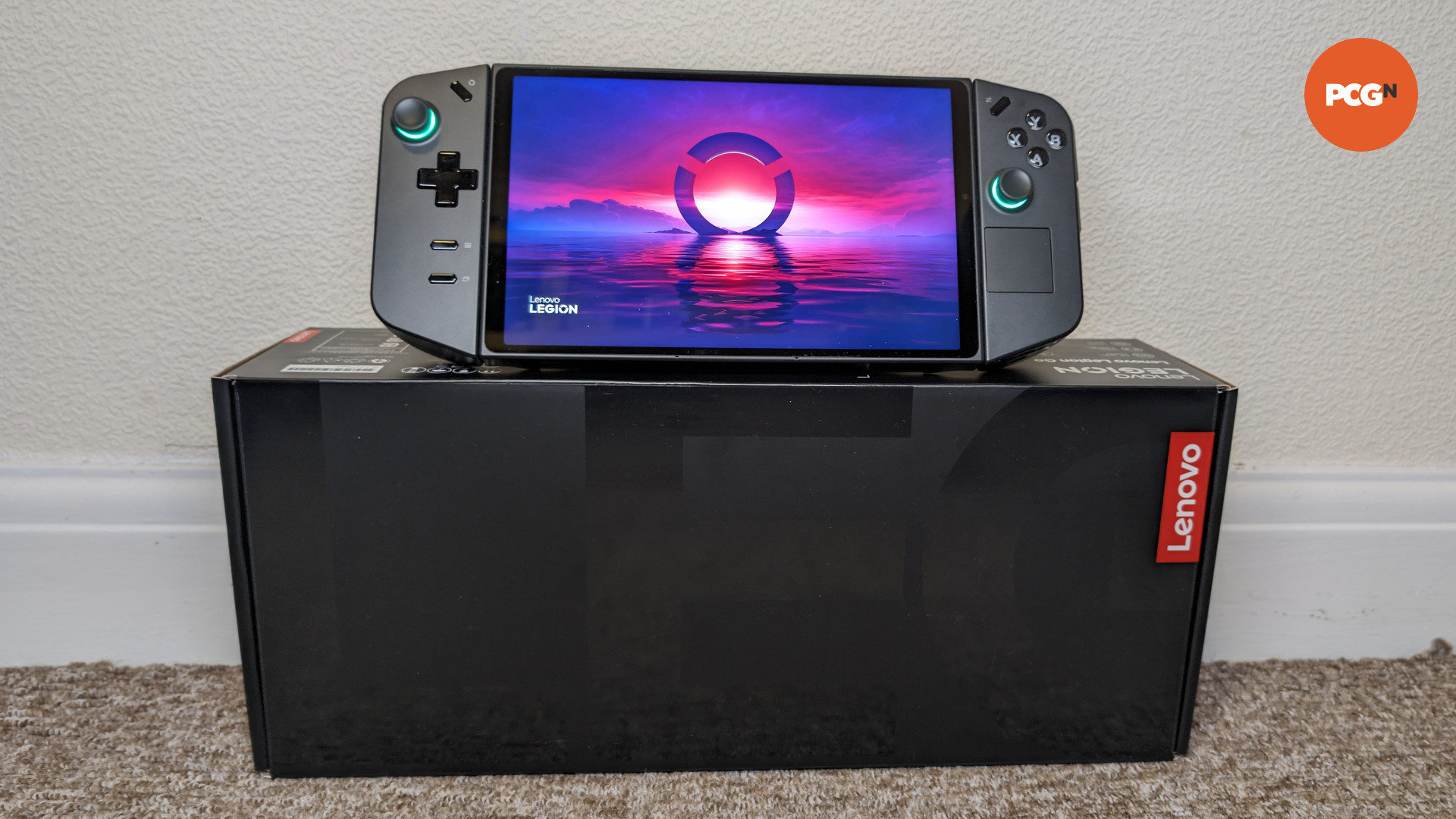
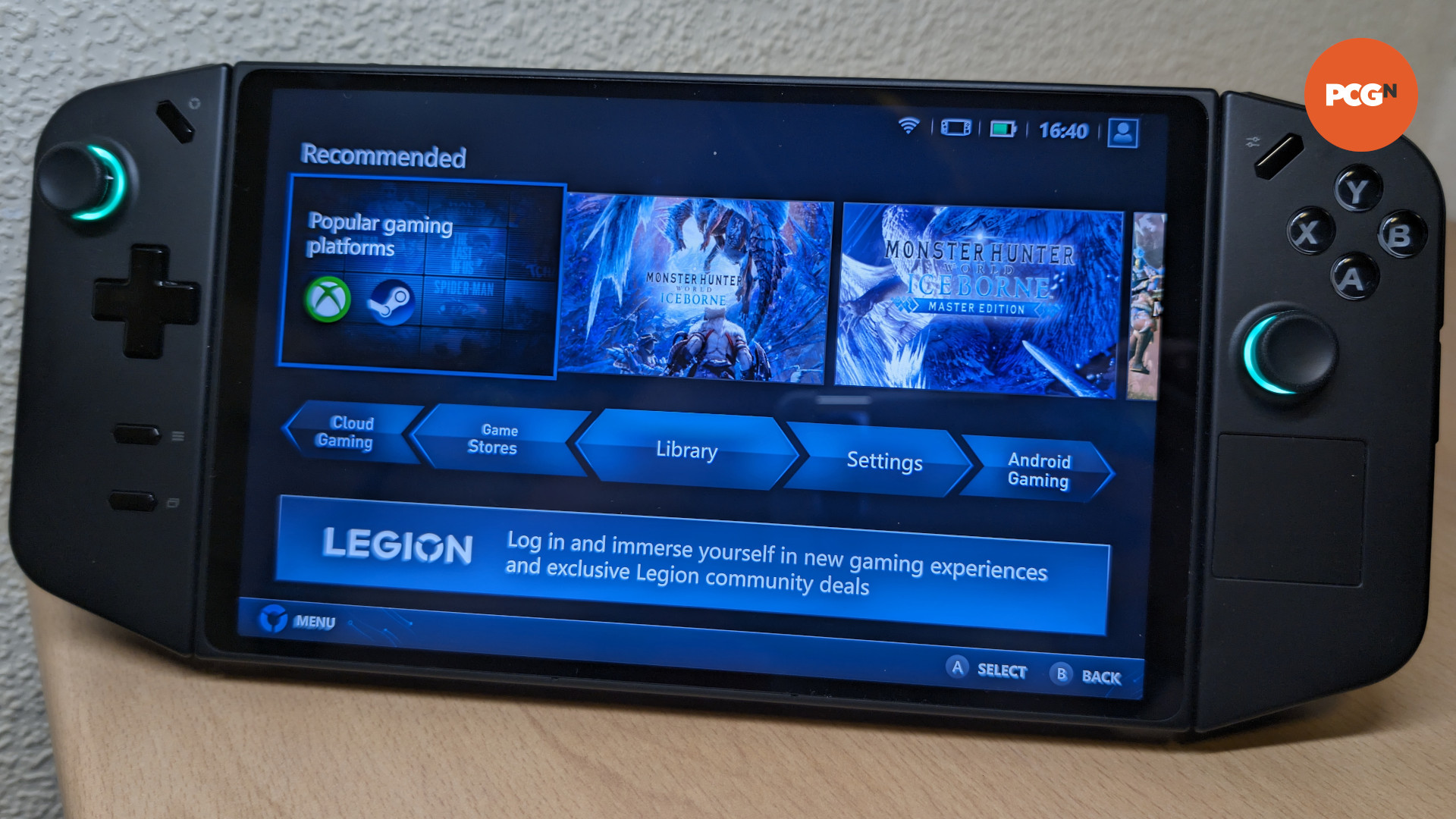
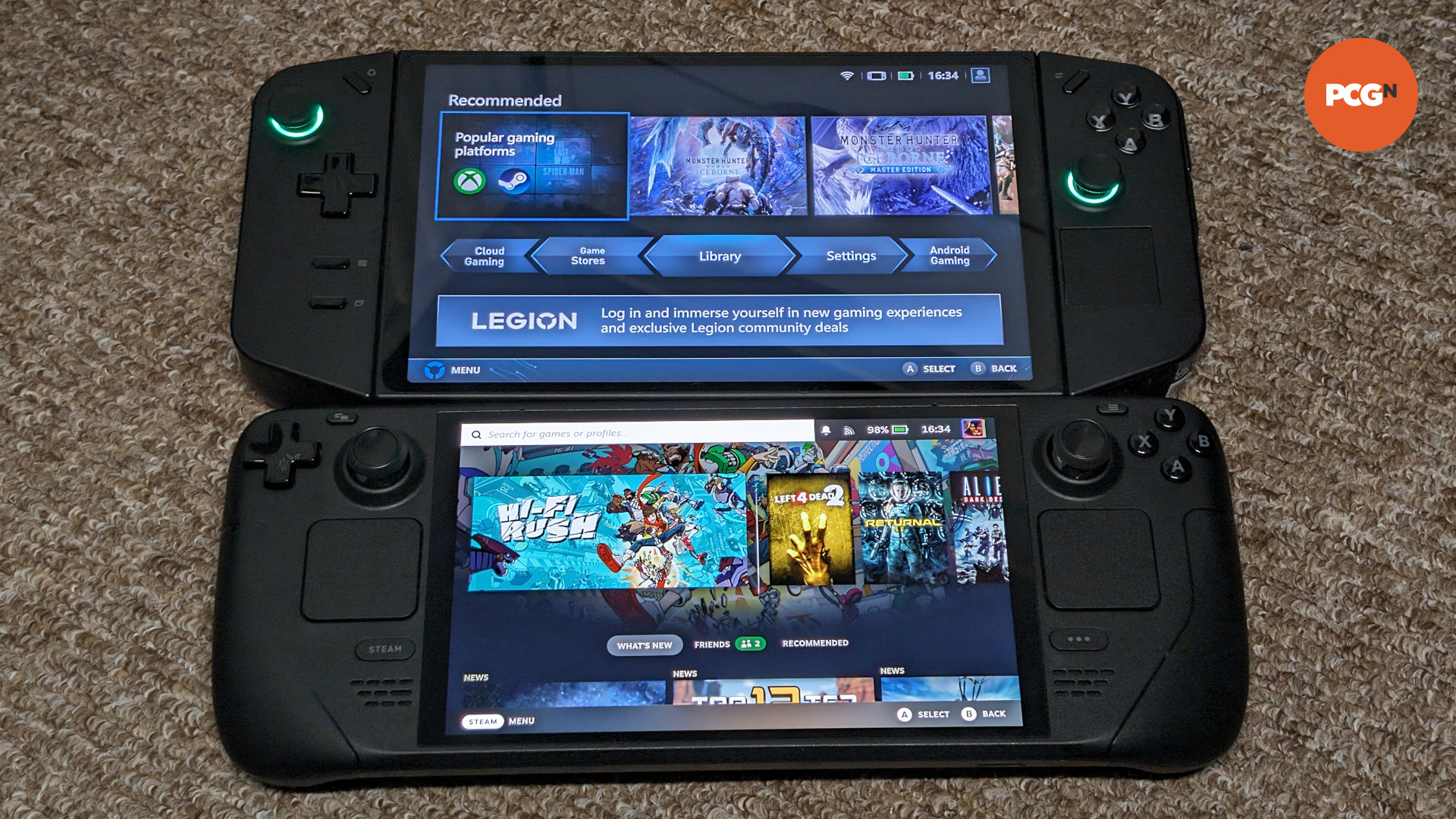
Comments are closed.